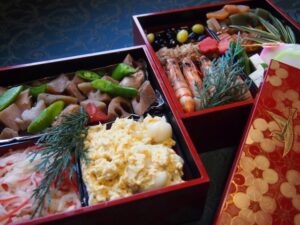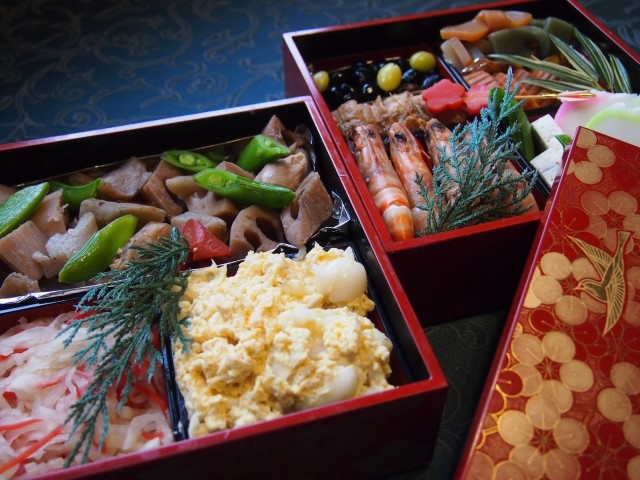12/17 の放送の「現代英語」の放送を聞いて勉強した内容です。
| 🔴 「現代英語」では、 Lesson ごとのテーマがあり、Part 1 では ニュース英文の理解、そして Part 2 では学んだ英文の反訳トレーニングをするという構成をとっています。 |
Lesson 26 Minting of new 500-yen coins begins- Part2
Opening その他で
Hannah Grace さん の部分だけピックアップしました。
● Opening
– Hi, I’m Hannah Grace. Thanks for joining us.
● 反訳トレーニングの後に
– Practicing phrases over and over is like exercise for your mouth
muscles. You’ll get stronger and stronger, the more you practice.
● 最後に
– Great job, everyone.
反訳トレーニング
1. for the first time という表現を使った文をつくってみよう
【日本語】
▶︎[何が]:日本の500円硬貨が ※単数
▶︎[どうなっている]:持っている – 新しい外観を / 初めて
▶︎[〜の期間の中で]:〜の期間の中で[以上 – 20年間]
🔶これを日本語に合わせて英語にしていきます
👉 Japan’s 500-yen coin [どうなっている]
👉 has a new look for the first time [〜の期間の中で]
👉 in more than two decades.
※日本の500円の硬貨が、初めて新しい外観になっています、20年を超える期間の中で。
| Japan’s 500-yen coin 👉 has a new look for the first time 👉 in more than two decades. |
🔴 for the first time:初めて[〜する]
※ a new look で「新しい外観」
※ decade で「10年間」- two decades で「20年間」
◎テキストと少し日本語の表現を変えています。
【伊藤先生から】
今回の新500円硬貨は、500円硬貨としては3代目となります。
初代が発行されたのは、1982年。
そして、今まで使われてきた2代目は、2000年に発行されました。
2000年から数えて、「20年以上の期間の中で初めて」つまり
「20年以上ぶりに」に変わったというわけです。
2 . width という単語を使った文をつくってみよう
【日本語】
▶︎[何は]:[ギザギザ – の – 硬貨]は ※複数形
▶︎[持っている]:持っている / 不規則な幅 – と – 間隔を
🔶これを日本語に合わせて英語にしていきます。
👉 The ridges of the coins [持ってる]
👉 have irregular widths and intervals.
※硬貨のギザギザには、不規則な幅と間隔があります。
| The ridges of the coins 👉 have irregular widths and intervals. |
🔴 width:幅
※ width の複数形は、widths
※ width とセットで「高さ=height」も覚えておきましょう。
◎テキストと少し日本語の表現を変えています。
3. (it) is the first time (that) 〜 have… という表現を使ってみよう
【日本語】
▶︎[何がどうだ]:(それは) – です- 初めてのこと
▶︎[どんなことが]:〜ということ[この特徴が – 使用されている / 普通の硬貨に対して]
🔶これを日本語に合わせて英語にしていきます。
👉 It is the first time
👉 that this feature has been used for ordinary coins.
※初めてのことです、この特徴が使用されたのは、普通の硬貨に。
| It is the first time 👉 that this feature has been used 👉 for an ordinary coin. |
🔴 (it) is the first time (that) 〜 have …:〜が…したのは初めてのことです
◎テキストと少し日本語の表現を変えています。
Let’s Try!
🟠「反訳トレーニング」のような「日本語」の並びにしてみました。
1. for the first time を使って
【日本語】
▶︎[誰が – どうした] :私たちは – 作っています / 「おせち」料理を
▶︎[どのくらいぶりに]:初めて / 5年間の中で
(私たちは「おせち」料理を5年ぶりに作っています。)
👉 We are making “osechi” dishes for the first time in five years.
※「おせち」料理は、”osechi” dishes
※「〜ぶりに」は、for the first time in 〜

2. (it) is the first time (that) 〜 have …を使って
【日本語】
▶︎[何が – どうだ] :これが – です – 初めてのこと
▶︎[どんなことが] :〜ということ[彼らが – 祝った / クリスマスを / 日本で]
(彼らが日本でクリスマスを祝ったのは、これが初めてのことです。)
👉 This is the first time that they have celebrated Christmas in Japan.
※この形では、that 以降の節は「現在完了 – have celebrated」を使うのが正式。
ただし「話し言葉」ではシンプルに言おうとする意識が働いて「過去形 – celebrated」
を用いて代用することもあります。
Discussion – チェックした部分
🔵 If the mint says this is the first time normal coins have had these features,
they must be pretty interesting.
◎ if節の動詞が「現在形」なので、この文は「条件・前提」を表現しています。
▶︎その条件が、「もし造幣局が〜と言うなら」となります。
【造幣局が言っている内容】
・主語 = this・動詞 = is・補語 = the first time
⇨ this is the first time that 〜 have ….. の構文になっています。
🔵 a big change is made to common currency.
◎ make a change to 〜 で「〜に変化を加える」
この受動態の形で – a change is made to 〜「変化が〜に加えられる」
※ currency は「通貨」で、common currency でここs「なじみのある通貨」
🔵 It sounds like the mint is putting a lot of thought into it.
◎ put a lot of thought into 〜で、「〜についてじっくり考える」
▶︎テキストでは、
「偽造対策 (it = against counterfeiting)をいろいろ考えている」となってます。
言葉の心 – ridgeとは …
🔴 ridge の共通するイメージは「細長く盛り上がったもの」
▶︎代表的な意味は…
山頂から山頂へと高く連なる「尾根」
【コインのギザギザ (ridges)ができた訳】
👉大昔のコインの側面には溝がなかったのですが、
– 金貨の周りをこっそり削って儲ける悪者が出現したため
▶︎防止策としてギザギザが考案されたようだ。
▶︎目の不自由な方が硬貨を判別するにも役立つ。
・1本のギザが a ridge
・ギザギザで ridges
【 ridgeに関わる表現】
① ridge の反対 – へこんでいるものとして valley「谷」
② ridges and valleys で「尾根と谷」
③「鼻梁」は nasal ridge
④「指の爪の細長い線」も ridge
⑤「指紋の隆起している線」は ridge
-「隆起していない部分の線」は valley
これで、
Lesson 26 Part 2 は終了です。



コメント